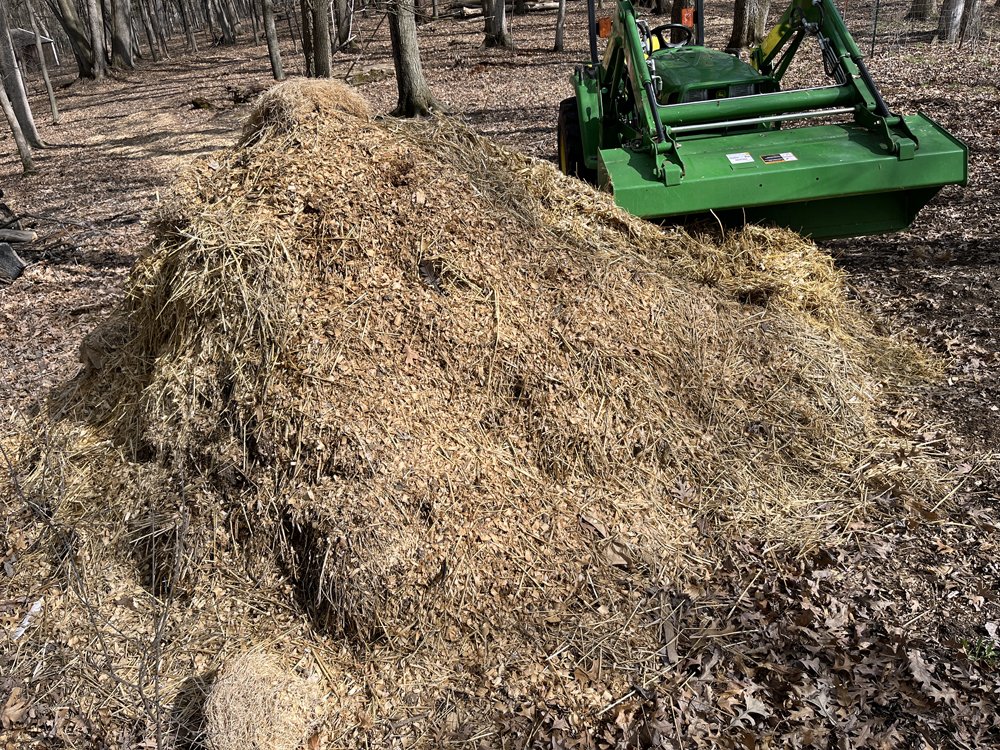Poop (Dealing With Those Piles of Chicken Manure)
Poo Emoji: Twitter
Are you considering the possibility of having a few pretty little hens pecking around your lawn? You should! Chickens are the best! But before you head out to pick out some little peepers, let me introduce you to one important and necessary fact: Chickens are pooping maniacs! I can’t say that I’ve conducted any scientifically controlled measurements in my coop, but the estimates that I’ve read tell me that one chicken produces somewhere in the range of 50 pounds of excrement in a year. Assuming you’ve got a hen that weighs five pounds, that means that in one year she makes ten times her weight in poultry-doo. Or to look at it another way, suppose you’ve got a really good laying hen who produces 300 eggs in a year and that each egg weighs 60 grams. If you do the math, that hen produces about 40 pounds of eggs in a year—so I think it is safe to say that a chicken’s per capita manufacture of guano outpaces her egg production.
This, of course, is all an esoteric discussion unless you’re considering getting some backyard chickens. Once you’ve got chickens, figuring out what to do with all that poo becomes a real dilemma. It’s important to keep the coop clean. It isn’t healthy for your birds to be walking around in an accumulation of their own excrement. It’s also important for them to have dry litter. Chicken poop is 75% water by weight, so the litter can become soggy pretty quickly. Also, consider the fact that chickens poop pretty much 24/7—even in their sleep. The area under the roost can develop a pretty significant pile of droppings after just one night. And then the chickens will hop off the roost in the morning and happily scratch through it. For sweet and lovable animals, they do have some pretty disgusting habits. OK, you still want chickens? Good. Let’s talk about how to deal with the mess.
First you need good absorbent litter to cover the floor of the coop. There are a variety of options. Straw, hay and sand are all popular choices. Some people use shredded dry leaves or grass clippings which are inexpensive, but also have some inherent problems. Shredded paper works. I like pine shavings because they are fairly absorbent, don’t break down, are relatively dust-free, are available at most farm stores, and when freshly placed in your coop give the whole coop a fresh piney smell.
I thoroughly clean my coops once a month—that involves replacing all the old, soiled litter, plus general dusting and cobweb removal. I would probably have to do the thorough cleaning more frequently if it weren’t for my secret weapon: poop trays!
Remember those piles of droppings under the roost? If a chicken spends half the day on the roost, that’s where half of her daily output of poop will wind up. So I’ve created a collection device. I use those flat plastic boxes that are designed for storing garments under beds. I covered the tops of the boxes with a “lid” that I made out of wire fencing stretched over a wooden frame. I put a layer of old litter from the coop floor in each tray and slide the trays under the roost. The poop falls through the fencing and into the tray. Every couple of days I just pick the trays up and dump the contents into my compost pile.
Mary the Campine proudly walks by one of the poop trays I made out of garment boxes
Oh yeah! The compost pile! Chicken manure makes an excellent fertilizer for your garden, but it needs to be composted first. Composting destroys any potential pathogens that may be in the manure. Also fresh chicken manure is so “hot” (high in nitrogen) that it can actually kill the plants in your garden. Composting the high-nitrogen manure with the high-carbon litter material creates a beautifully balanced compost. I maintain two piles—one is the working pile to which I’m continuously adding fresh material from the coop, and one is the “ready’ pile—composted material from the previous year that’s ready for use on my garden.
The Working Pile
Your compost pile can go in any secluded corner of your yard—but it needs to be in a spot the chickens can’t reach! You can simply have a pile or you can use a barrel or some other sort of container—it all depends on your situation and your aesthetic sensibilities. You don’t need to dither over your pile. It will compost just fine without your intervention. But you should turn the pile periodically to aerate it.
Fresh chicken manure has an odor that I wouldn’t want to incorporate into a cologne or scented candle, but it’s still not that bad. Composted chicken manure actually has a pleasant, sweet, earthy smell.
The Ready Pile
But manure that has composted anaerobically (without oxygen) produces a stink so horrific it could knock a bird off a branch a block away. An anaerobic manure pile in your backyard won’t kill you but you likely will wish that you were dead. And your neighbors may wish exactly the same thing.
Anaerobic digestion produces things like ammonia (think of the unpleasant, pungent odor in glass cleaner), all sorts of sulfur compounds such as hydrogen sulfide (think rotten eggs) and dimethyl sulfide (rotten garlic). Then there are a whole bunch of volatile fatty acids, aromatic compounds and amines with long chemical names nobody remembers and odors that nobody wants to remember. Trust me, you don’t want these organic compounds in your compost. So grab that pitchfork, rake or whatever tool you choose and turn your pile at least once a month. It makes all the difference!
Your reward will be a heaping helping of wonderful, earthy compost. Eggs AND compost from your chickens! Who knew?!
Composted Chicken Manure: Black Gold









